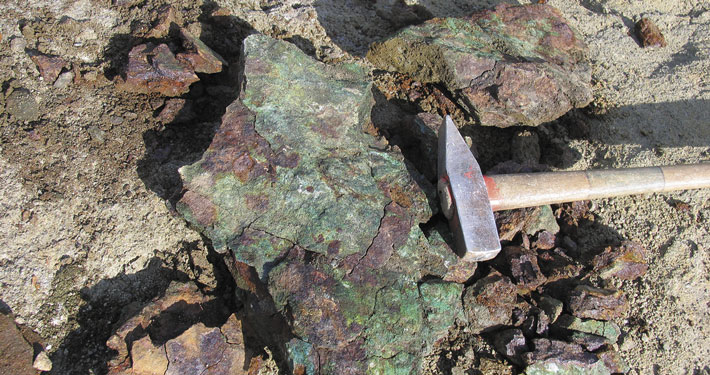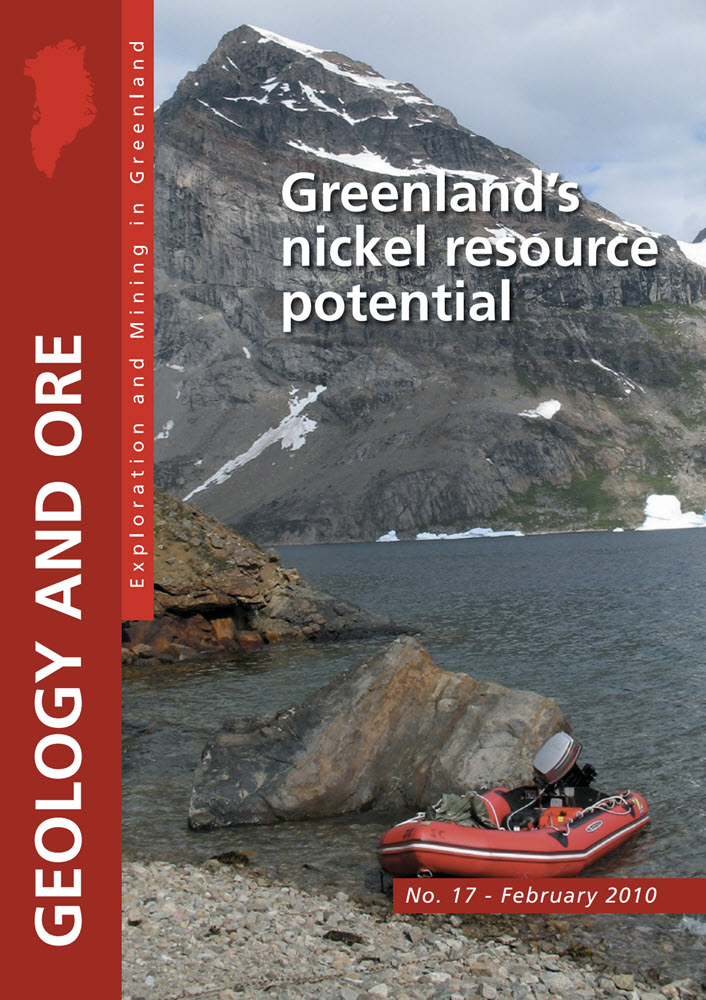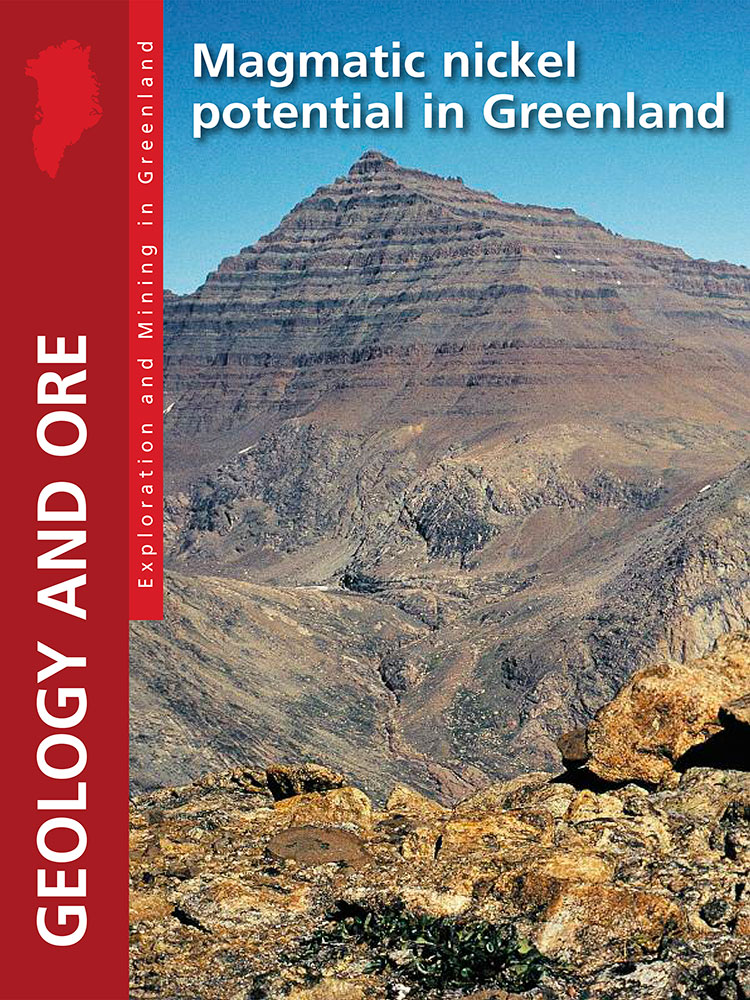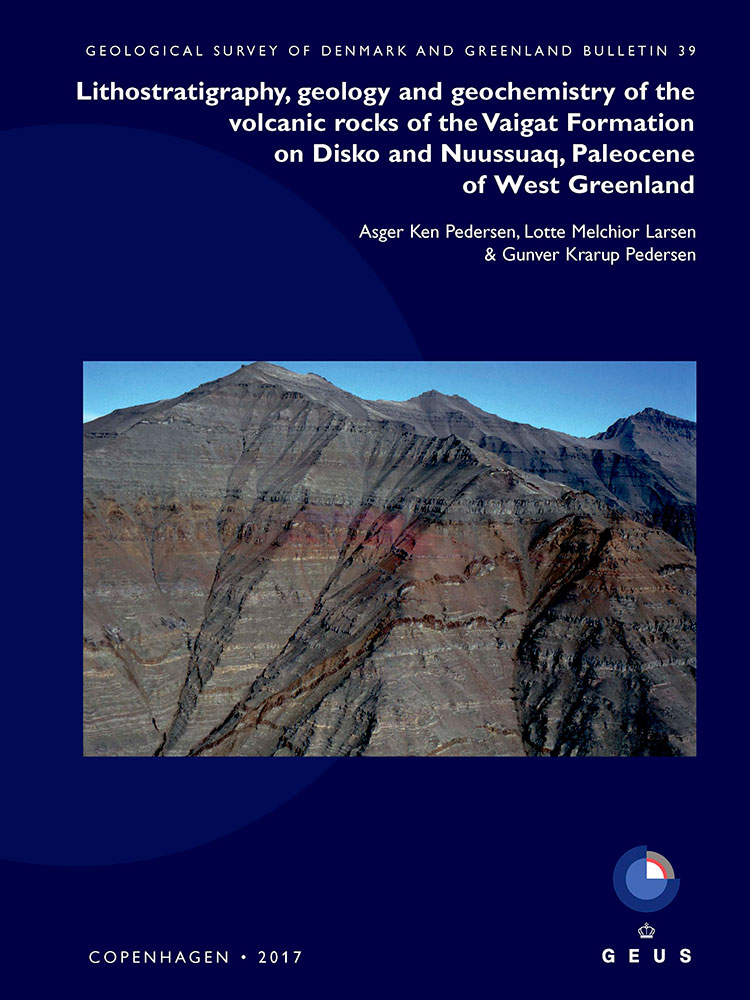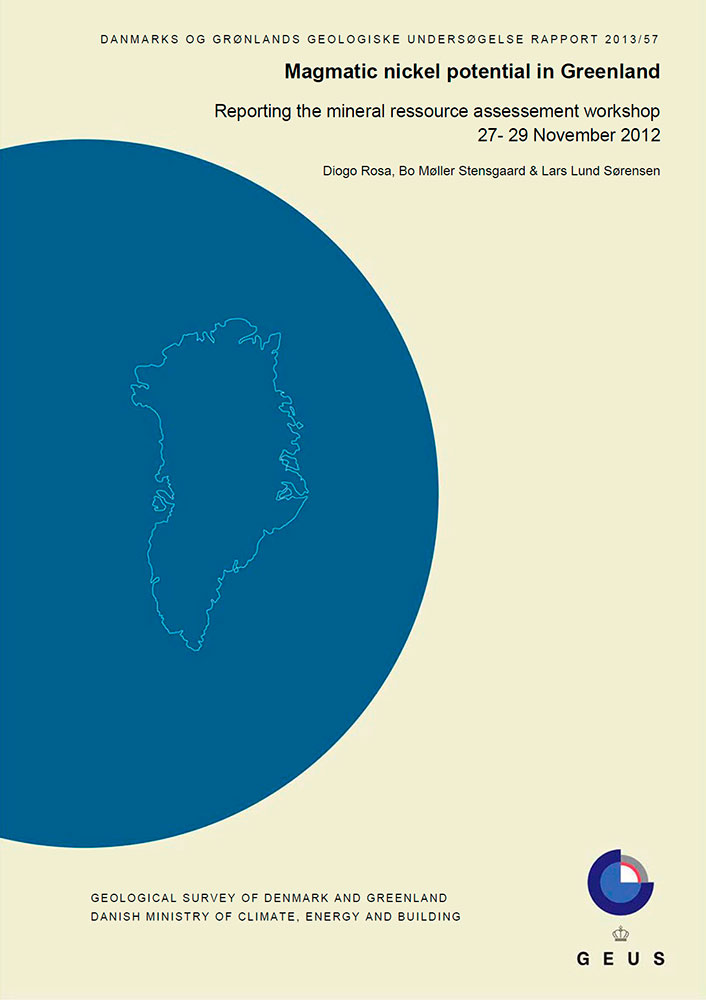Major nickel occurrences in Greenland
The nickle potential in Greenland is related to mafic to ultramafic magmatism, which can be associated with komatiite-hosted occurrences, contact-type occurrences and conduit-type occurrences related to picritic and/or tholeiitic basalt dyke/sill complexes. Tracts with potential to host these occurrences, which extend from the Archean to the Palaeogene, were evaluated during a mineral potential assessment workshop, following USGS guidelines, held in 2012.
Read more about the Magmatic nickel potential in Greenland in the Geology and Ore issue 31, 2018.

